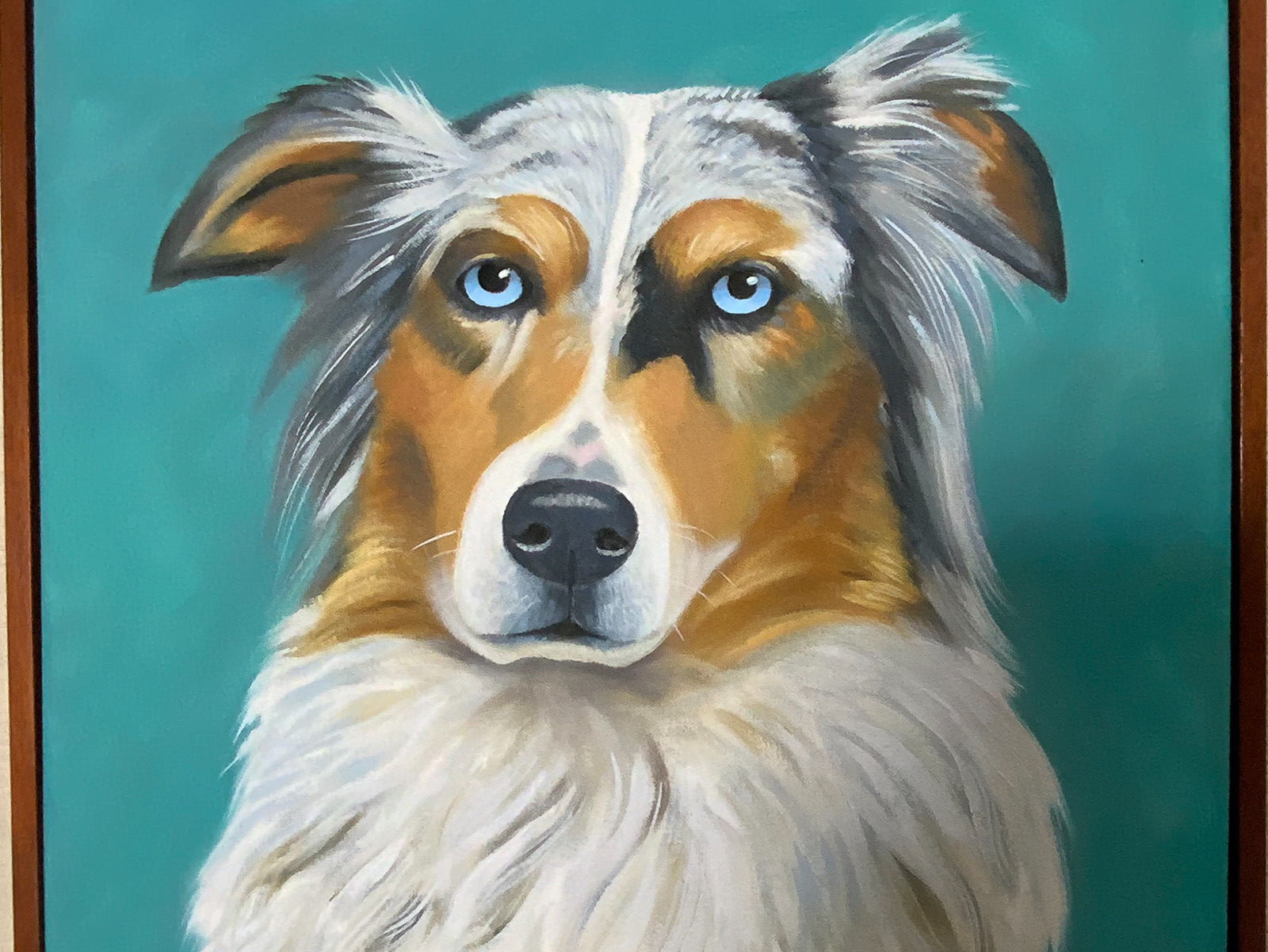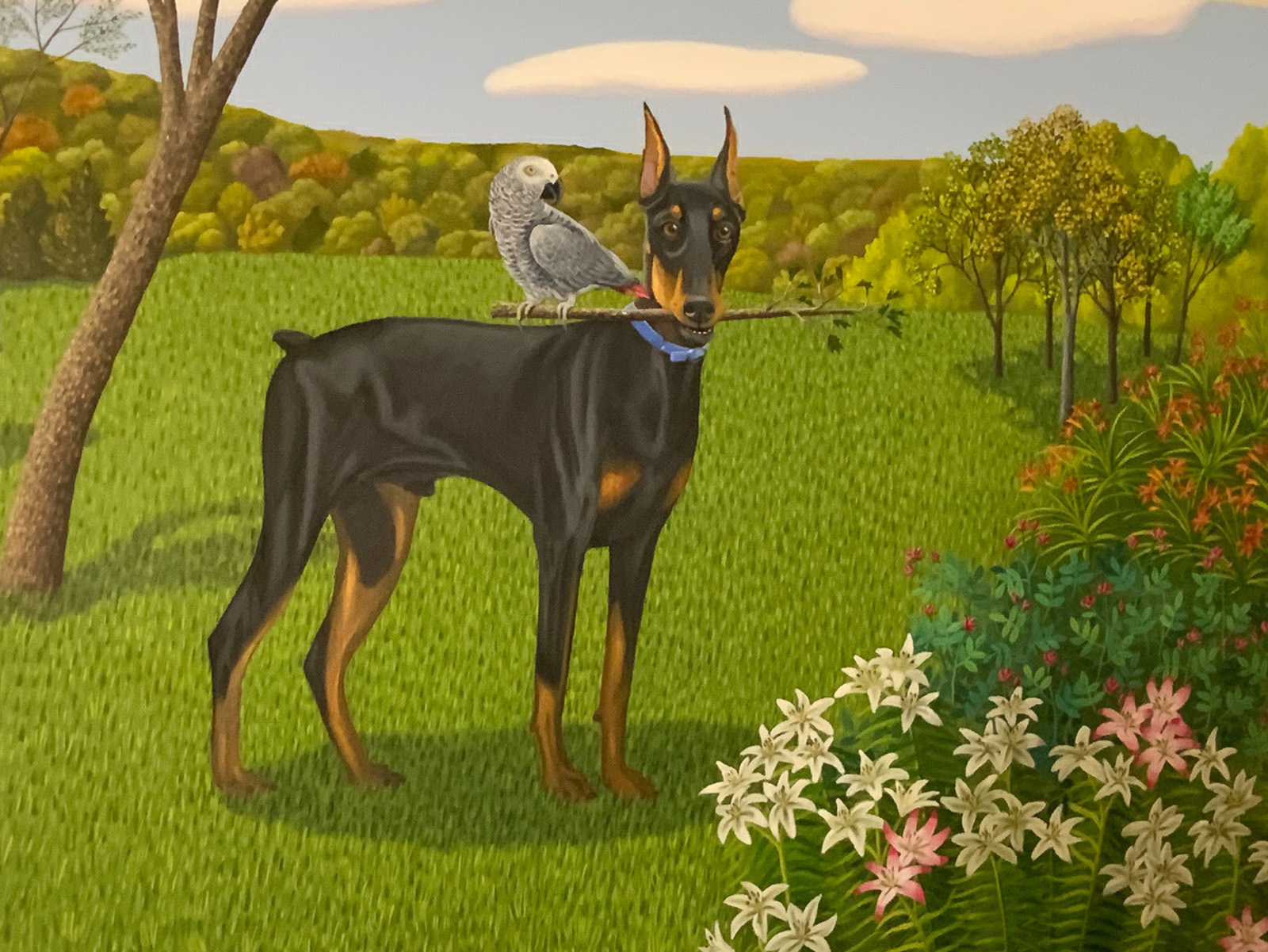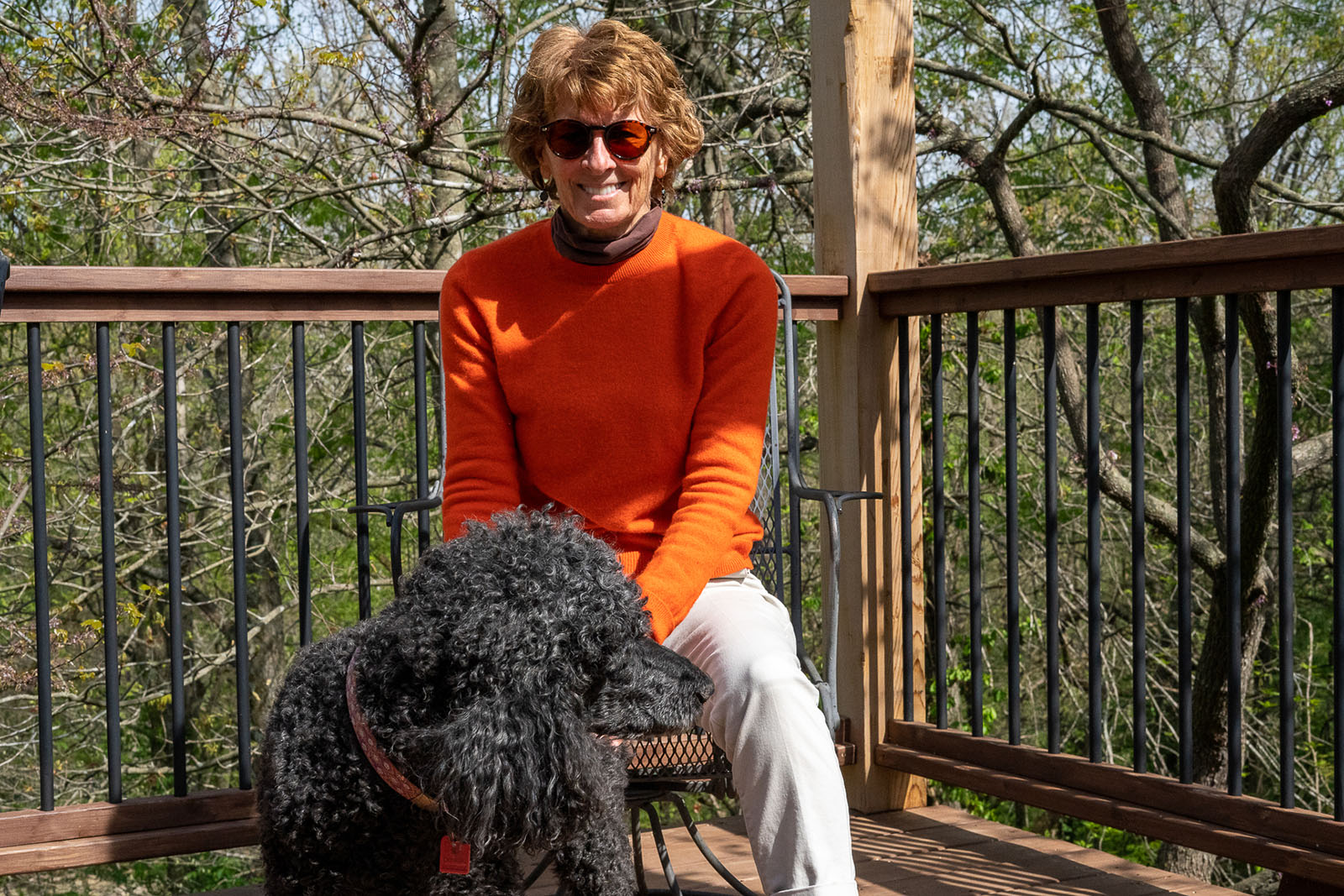Originally from outside Philadelphia, artist Jane Troup moved to the Midwest for the most relatable of reasons.
“I met somebody on Nantucket Island, and his grandmother had a huge farm here that she didn’t even live in. So, we were like, ‘We’re artists! We can live anywhere,’” Troup said.
The pair moved to the Ozarks but divorced after 10 years, and Troup moved to Springfield. She now shares a home with husband Gary Brown and poodle Tess. They live in a sunny place reminiscent of a treehouse overlooking a creek. For a painter specializing in landscapes and animals, it’s the perfect backdrop.
Troup knew she’d be an artist from the start.
“It was more like a calling. It’s like this inner voice said: ‘That’s what I’m supposed to do,’ Troup said. “Even when I had jobs, it was like, ‘No, I’m supposed to be doing this.’”
Opening the roof
Raised in a well-to-do family, Troup found a semblance of freedom after a financial hit.
When she was in her 20s, her father sold his manufacturing plant, which made precision parts, and developed a country club condo. It didn’t work out. Troup's family lost everything.
Things have a way of working out.
Troup points to the memoir “A Heartbreaking Work of Staggering Genius,” by Dave Eggers, to illustrate her mental shift.
“When his parents died, Eggers said, ‘The floor fell out of my life. But the roof opened,’” Troup said. “The security was gone, but he had freedom. When my parents lost their money, it was like, ‘Now I’m free.’”
Troup said she felt liberated from the pressure and guilt of not being as financially successful as her parents.
“You were trained at a young age, or I was, that what you need comes through the father,” she said. “When that was cut off, then it was like, ‘Oh, wow, all right. It’s me now and I have the freedom to be who I am.’”

The wolf at the door
That didn’t make it easy, even though Troup had supportive parents. She attended art school — albeit paying her way for her final two years at the Maryland Institute College of Art in Baltimore. She worked as a bartender and waitress to pay her bills for years, “to support my painting habit,” she said.
“My father was like, ‘You gotta get employed. You have to have a job.’”
“It’s hard to make money,” Troup continued. “You could be a really good artist, but no one’s going to take up your quest and be your business person. Not too many artists want to do that.”
She hasn’t had a day job since 1983, but Troup wasn’t always thriving financially.
“I will tell you, there were many years with that wolf at the door,” she said. “I got so paranoid about it. I finally was like, ‘This is ridiculous. I’m worried about money all the time.’”
Troup was divorced with two young kids. She didn’t get a day job, but she did work to change her mindset about money.
“I had help from a life coach and really explored that fear,” she said. “And when I was able to control the fear about money, then it came. When you’re afraid of something, you’re going to stay there.”
Painting furry friends
Troup came up with one particularly good revenue stream around 2001.
“I thought, ‘All right, it’s really hard to sell paintings,” Troup said. “What in the world can I do that somebody would pay for a painting because it had some significance to them?’”
She loved pets. So did everyone else.
Troup chose 16-by-16-inch square canvases. At first, she asked family and friends for photos of their furry friends and painted a dozen or so pet portraits, which she displayed at Mudhouse Coffee in downtown Springfield.
“I had to be able to prove to myself that I could pull it off each time,” Troup said. “Like, ‘Okay, I can do a painting and it won’t take me so long, and I can charge X.’”
Soon after, she was featured in Mary Engelbreit’s magazine “Home Companion” and started getting commissions. She’d found a niche.
“Doing pet portraits is a really good cash flow for artists,” Troup said. “I’m not really soliciting, but I have so many people that ask me to do them because I did them in the last 20 years.”
Clients will often ask Troup to paint multiple pets as they join the family over the years. Crista Hogan has commissioned three portraits: “'Stella the Wonderdog,' ‘Breaker, my sweet Irish setter,' and a joint portrait of cats Dewey and Nuni,” Hogan said.
“It is hard to express how much they mean to me,” Hogan added. “The only one still with us is Nuni, but thanks to Jane’s artistry, I have all of them present in spirit.”

Research, then zone out: the painting process
After accepting a pet portrait commission, Troup requests several photos and a description of the pet’s personality.
“I don’t want to just copy a photo,” she said. “That’s not interesting to me. I use several photos to get the three-dimensional idea of what they look like, what their personality is like.”
Then, she steps back.
“I just take all that information in and then just kind of zone out and paint it,” Troup said.
Clients might ask for a solid color background, or for Troup to incorporate a nature scene featuring a beloved mountain or tree.
Kathryn Hope commissioned Troup to do an oil painting of her family’s Doberman, Spencer, and their African gray parrot, Bob Hope, who were best friends. Troup incorporated flowers and trees from Hope’s garden into the scene.
After Spencer passed away, Hope asked Troup to paint the family's blue merle Australian shepherd, Henry.
“She spent several days with Henry to understand his personality, and she captured him and his expression perfectly,” Hope said.
Troup paints in a surrealist style, so she can show familiar objects in unexpected ways.
“You put a tree in a little bracket, and you’ve identified what it is, but you don’t see the true nature of it,” Troup said. “But, if it’s presented in a way that is different, then you can start to understand things about it that you didn’t when it was just too familiar.”
You give Plato a chance to show you those Forms instead of simply relying on your own limited vision.
“It’s worked for me because now people are familiar with my style,” Troup said. “They get it.”

Try and try again
Troup compares her process to archery. At first, she tries to hit the target, if not the bullseye.
“You start somewhere and you just keep trying to perfect it,” she said, pointing at a pet portrait on her easel. “That green is going to be water. I’ll probably do two more sessions, at least.”
A session lasts three or four hours as she works out pieces and repaints. She uses either acrylics or oils.
“Sometimes I can pull the whole painting off in maybe six hours, but then sometimes it can take 20 hours because you gotta pull it off,” she said.
Troup knows when it’s done intuitively.
“I usually listen to a book on tape or music so I can give the poor part of my brain that wants to control everything something to do,” Troup said. “Then I just paint without thinking about it too much.
“That’s a secret. That’s why I do pretty well, because I know how to slip into that place.”


